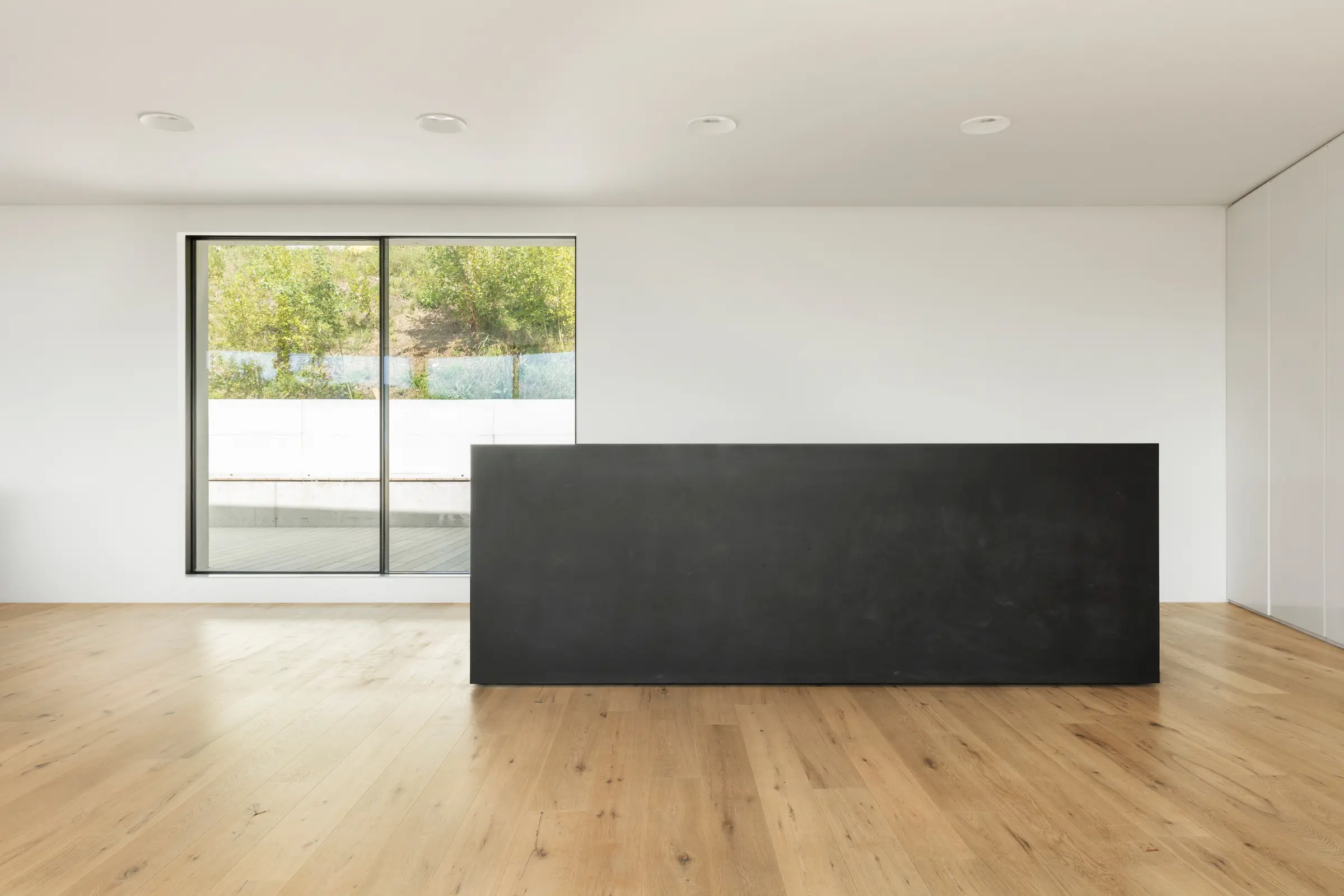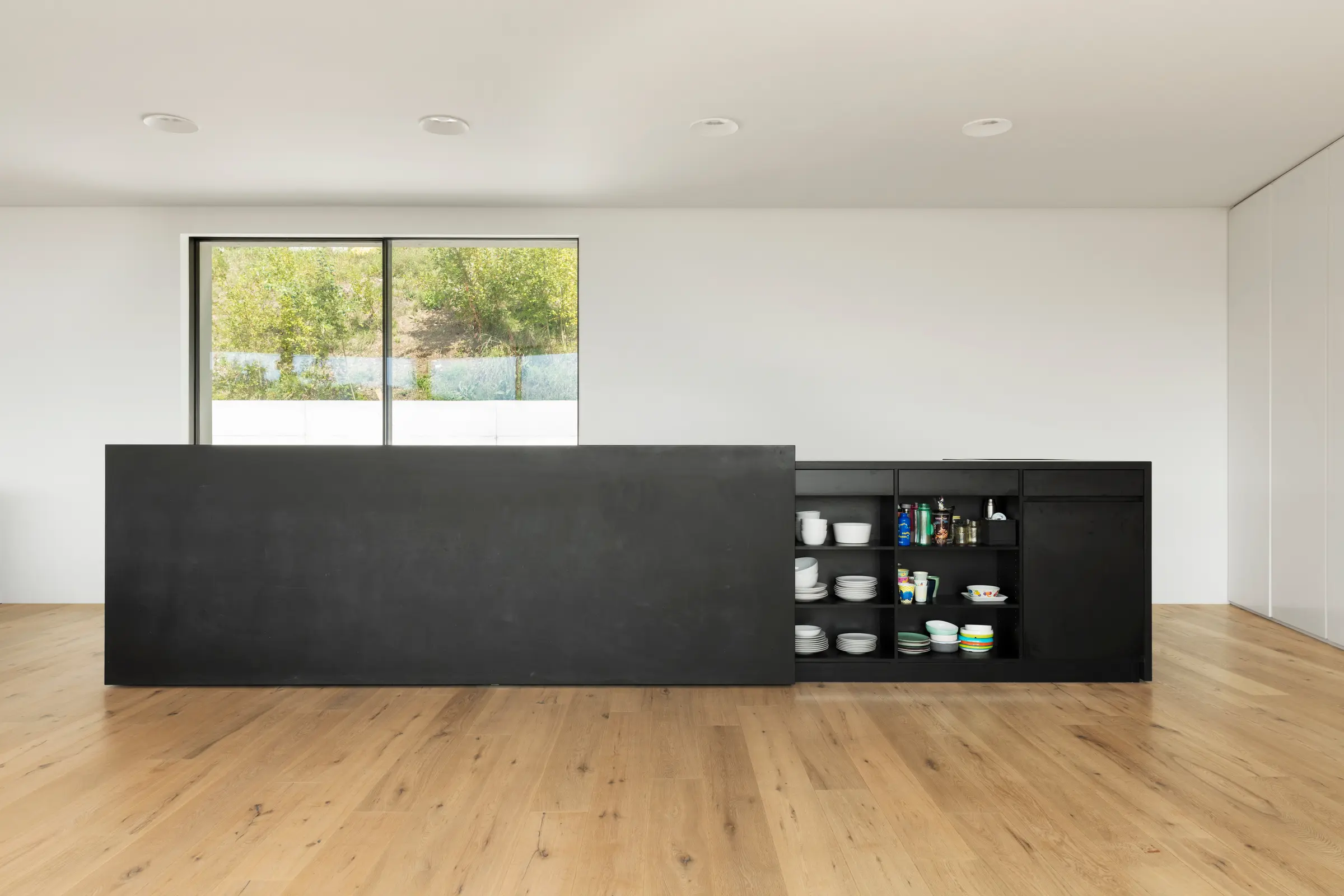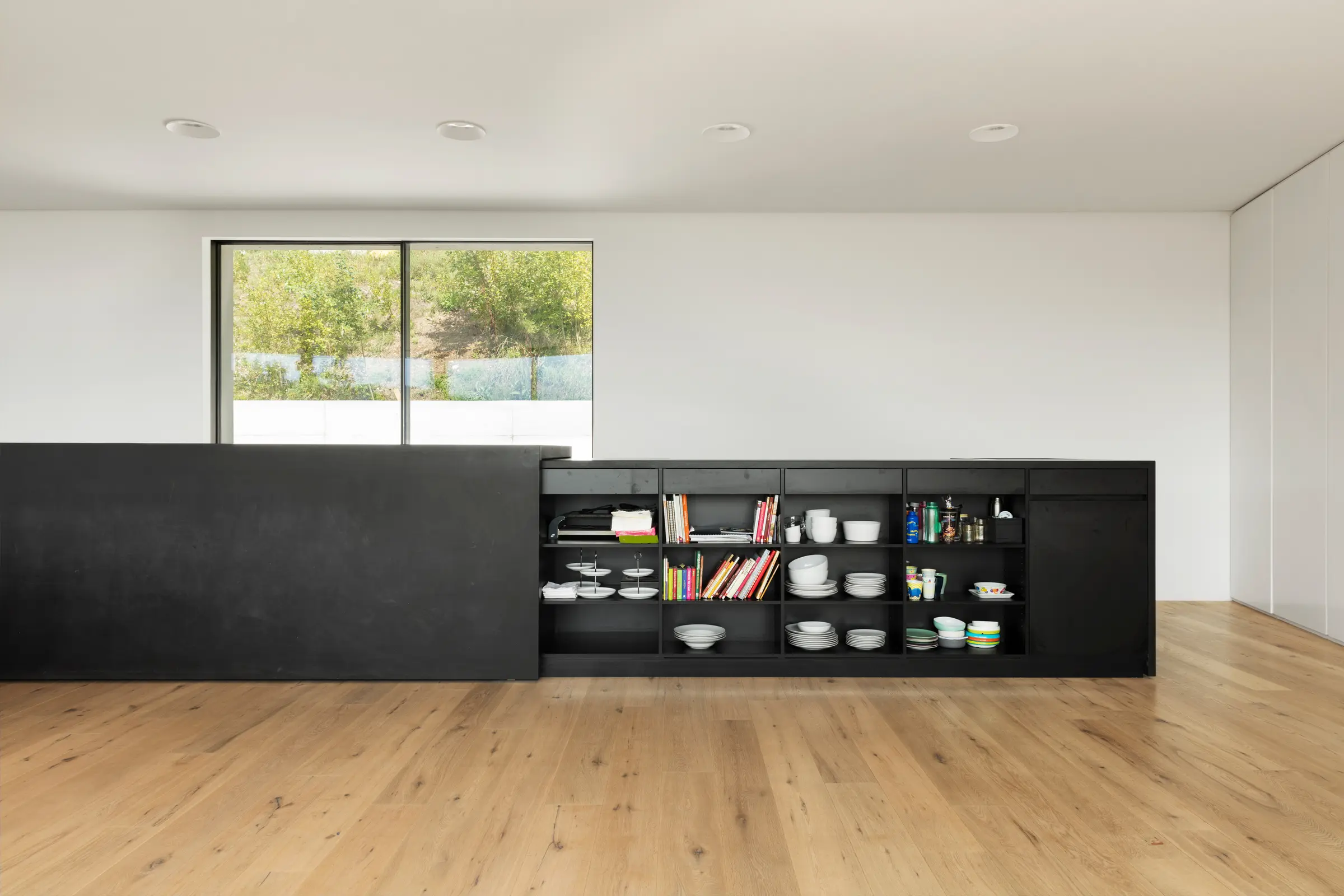December 2025
Reference
Seehaus R Wörthersee

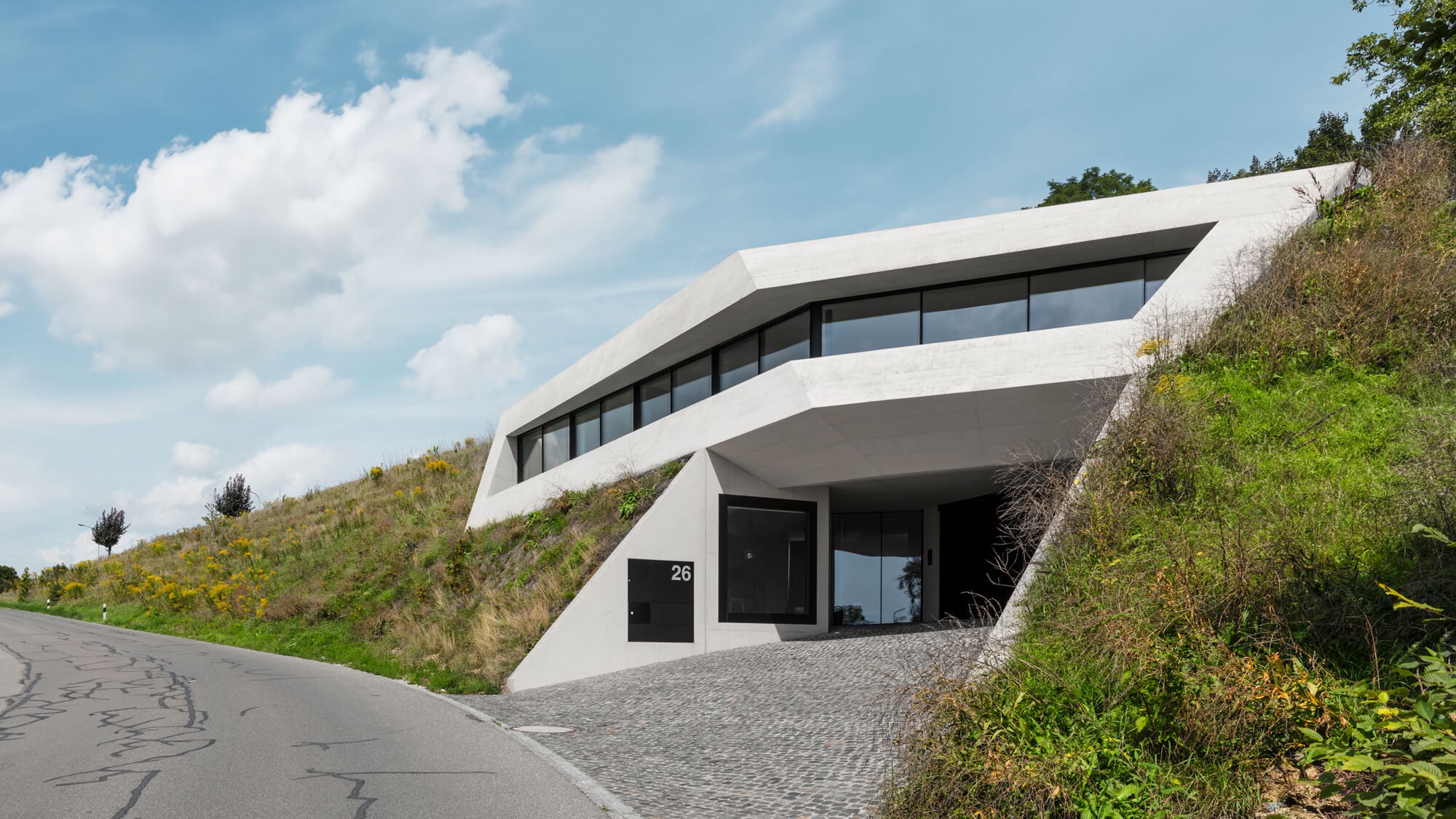
Dost designed a Minergie-P single-family house for a young family on the prominent Arova curve in Flurlingen. Topography, view, noise emission and access characterise the building. The site is located on a steep slope above the village and borders Neustrasse to the west and a busy cantonal road to the east. The industrial zone, with its imposing buildings, begins above the site. The building land lies on the outer border of the residential area and is the last undeveloped plot with a far-reaching view of the Rhine and surroundings in the municipality of Flurlingen.
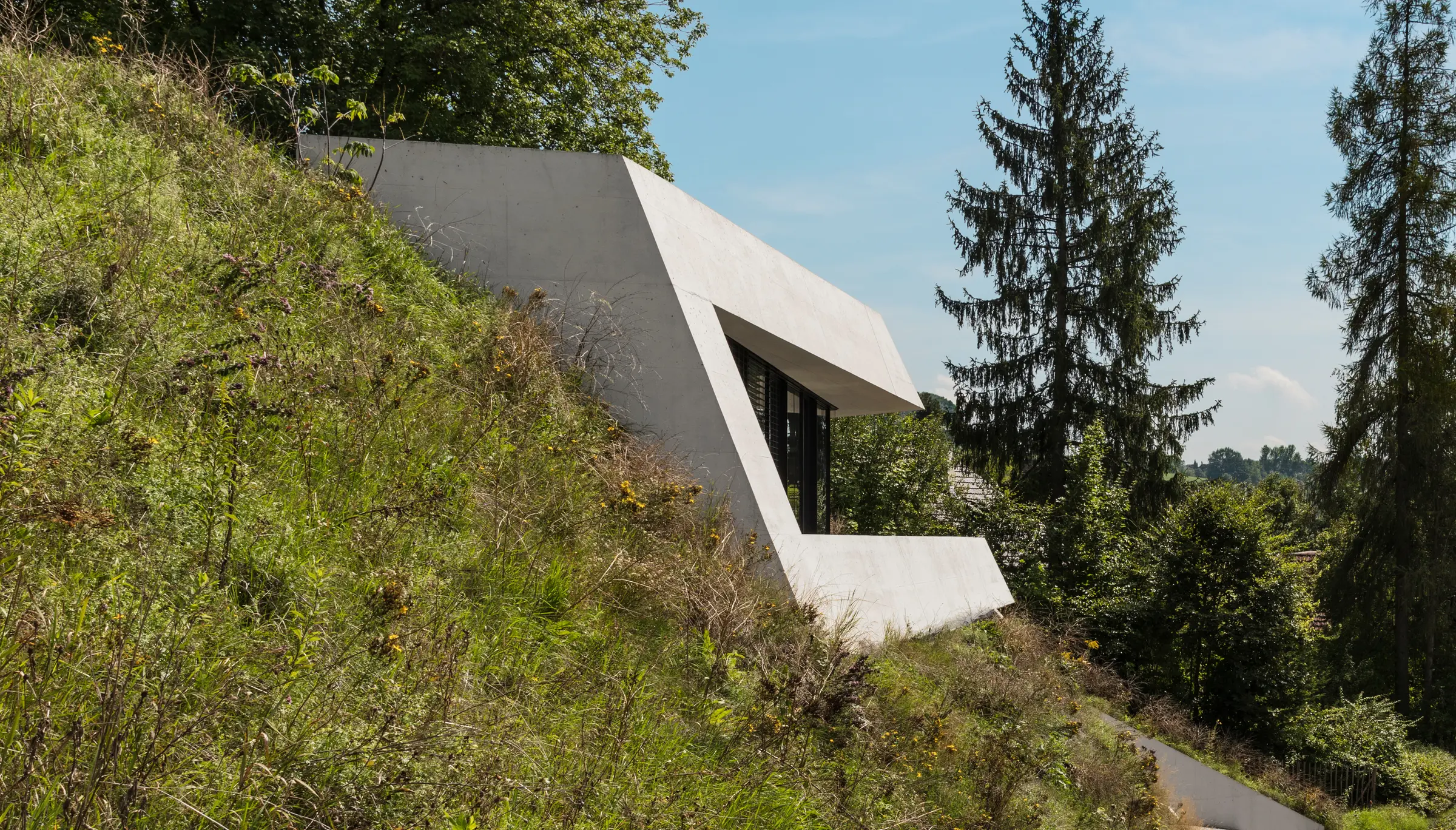
The narrow, tapering plot has an area of 3702 m2, of which only 800 m2 can be built. The rest of the land is in the agricultural zone. The aim of the concept is to profit from the advantages of the location and the plot and to avoid the negative aspects. Thus, the building was built into the steep slope and at a low level to Winterthurstrasse in order to escape the noise of the road and the power lines. All rooms are south-west facing to benefit from the view and sunlight. During the construction of the neighbouring industrial site, the humus and excavated material were distributed over the surrounding plots. The topography of the parcel is thus strongly shaped.
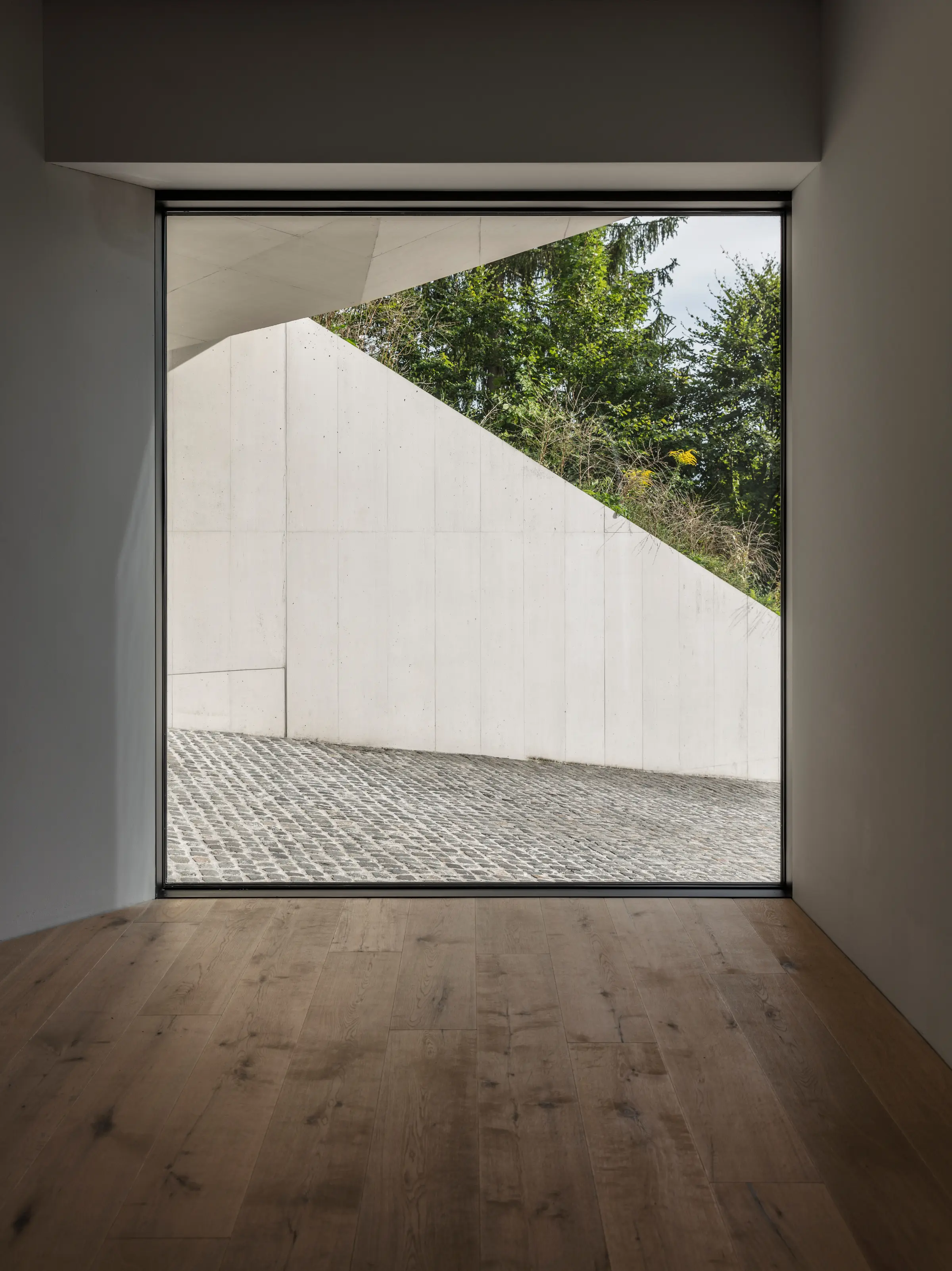
The building volume is understood as part of the landscape, so it should be gently overgrown by the slope, the meadows and the vines and become one with nature. The two-sided orientation of the building creates outdoor spaces with different qualities and references. The front façade makes a slight bend to separate the public spaces, such as living and dining, from the private spaces.
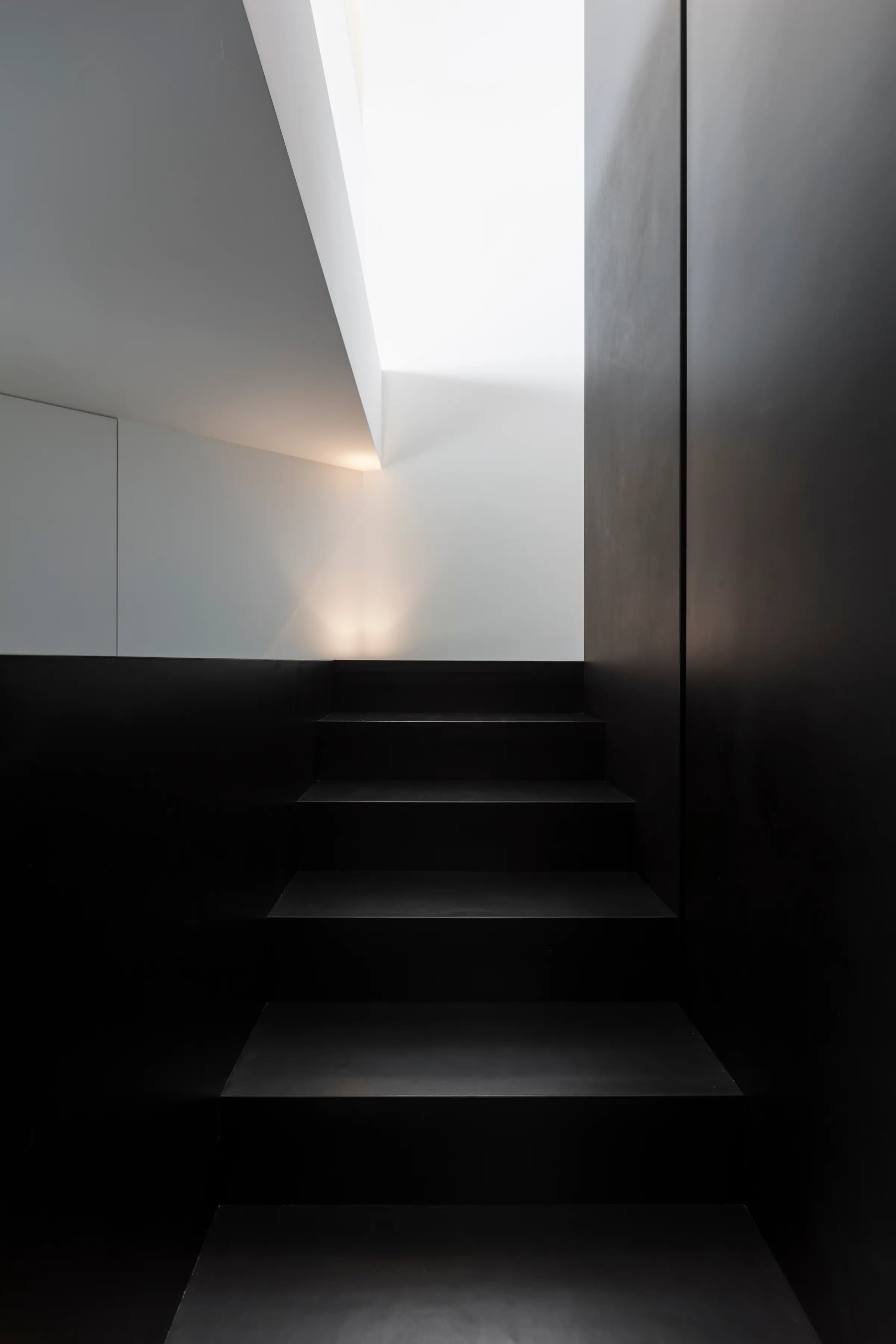
The landscape around the parcel is dominated by settlements, industrial buildings, roads, agricultural land, vineyards and the rather negative high-voltage power lines. In addition, there is the nearby forest and wild hedges as near-natural elements. The project provided the opportunity to re-examine and enhance the position of the parcel in the landscape. Topography, view, noise emission and access characterise the building and shape its design.
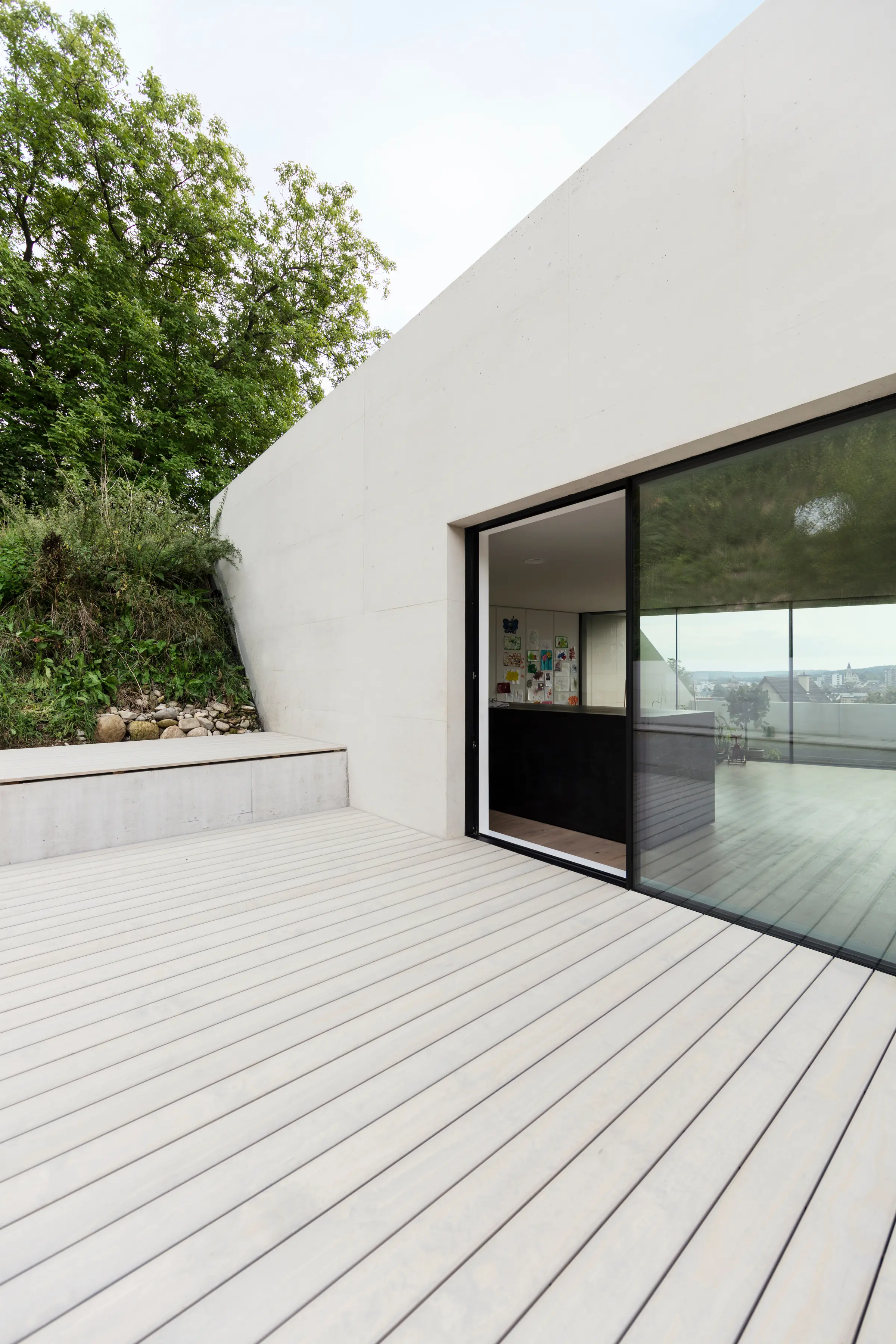
The entrance floor consists of an entrance, garage, hobby room, wine and storage cellar, laundry room and boiler room. The living floor, consisting of a living, dining and cooking area and up to 4 rooms, is accessed via a sculptural staircase. The wet rooms are located on the back wall facing the slope. The living floor has two outdoor areas. An urban terrace on the main facade and a nature-related area behind the building.
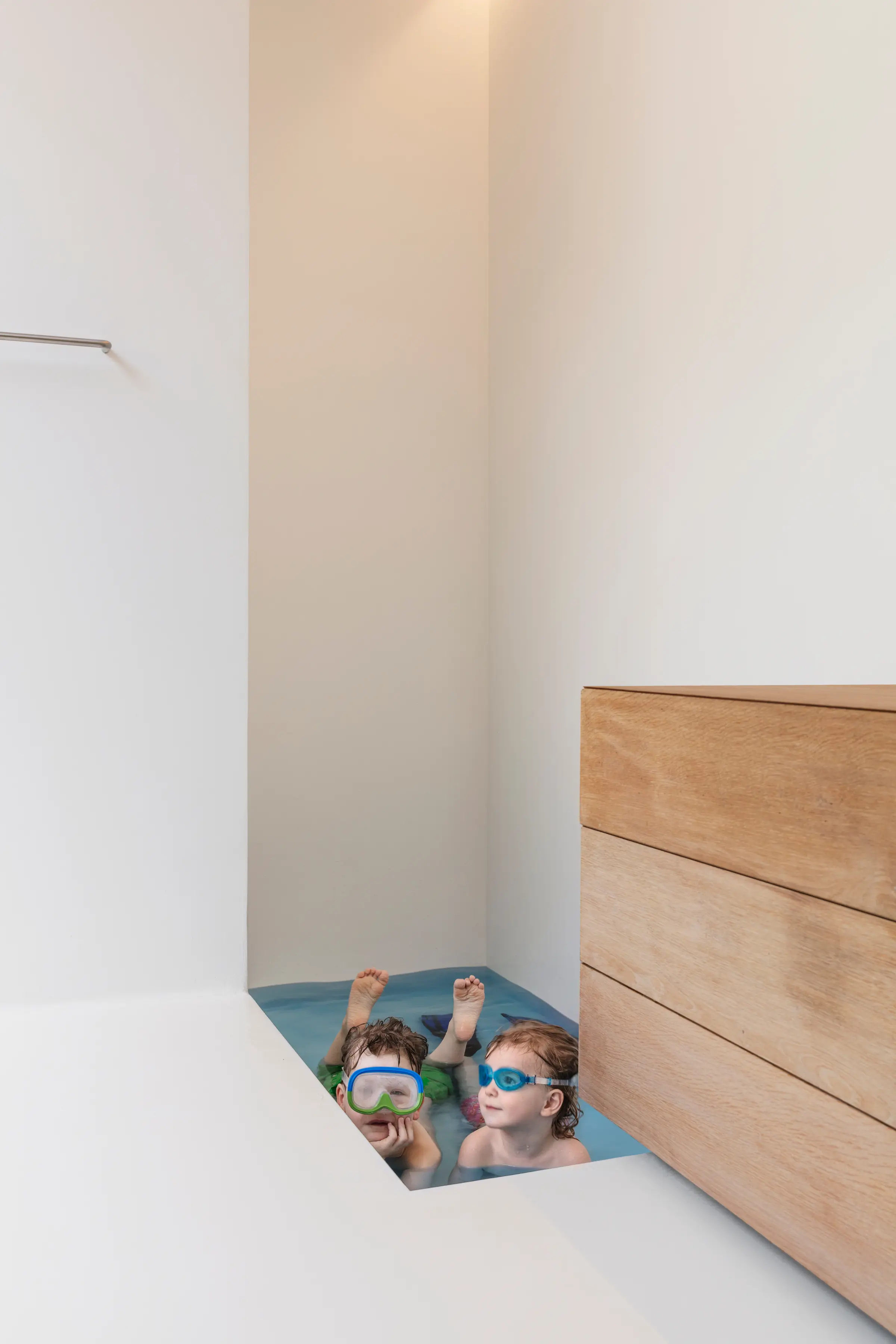
When the couple approaches Dost with the desire to create a building that can evolve with their lives, the thought of a family is no more than an option in their life plan. Sustainability, in general, but especially in relation to the spatial structure, was always an essential parameter in the design process. Thus, the building does the same as its cast-form industrial neighbours and relies on a load-bearing building envelope with a column grid, which allows for flexible handling of the floor plan. Linear wet rooms arranged on the courtyard side allow for numerous floor plan variants in the slope-side room layer.
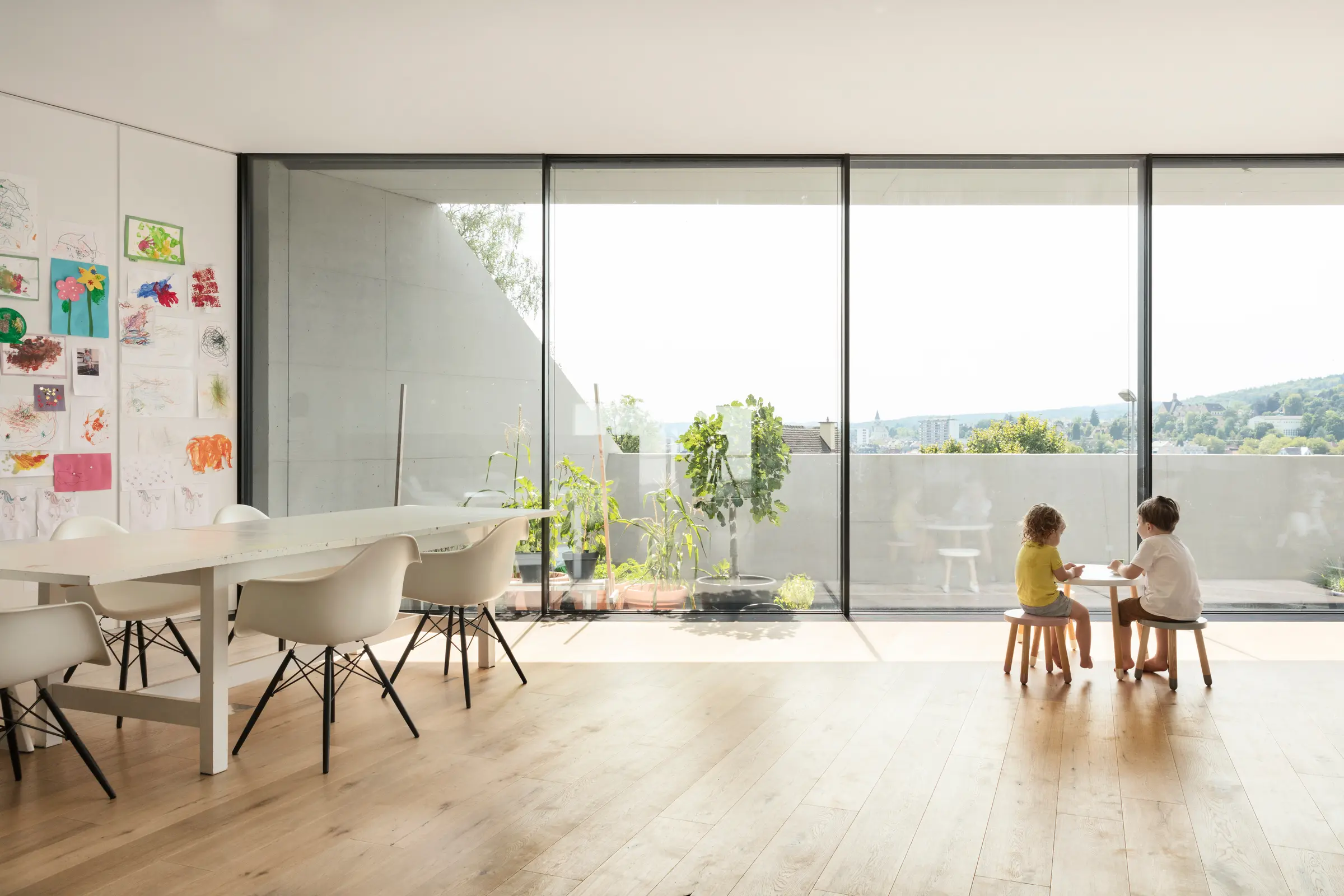
The building was originally envisaged as a loft-like open concept - however, a room was inserted during construction due to unexpected growth. In the interior, a reduced colour palette of white, oak and black creates a neutral stage for daily life and external influences. The concept for the interior is based on functional wall levels and individual reduced fixtures. While the wooden floor on the living floor is a naturally warm level that fluidly connects the exterior and interior spaces and contrasts with the otherwise monochrome rooms, fixtures in solid oak serve as tactile counterparts to the white wet rooms.
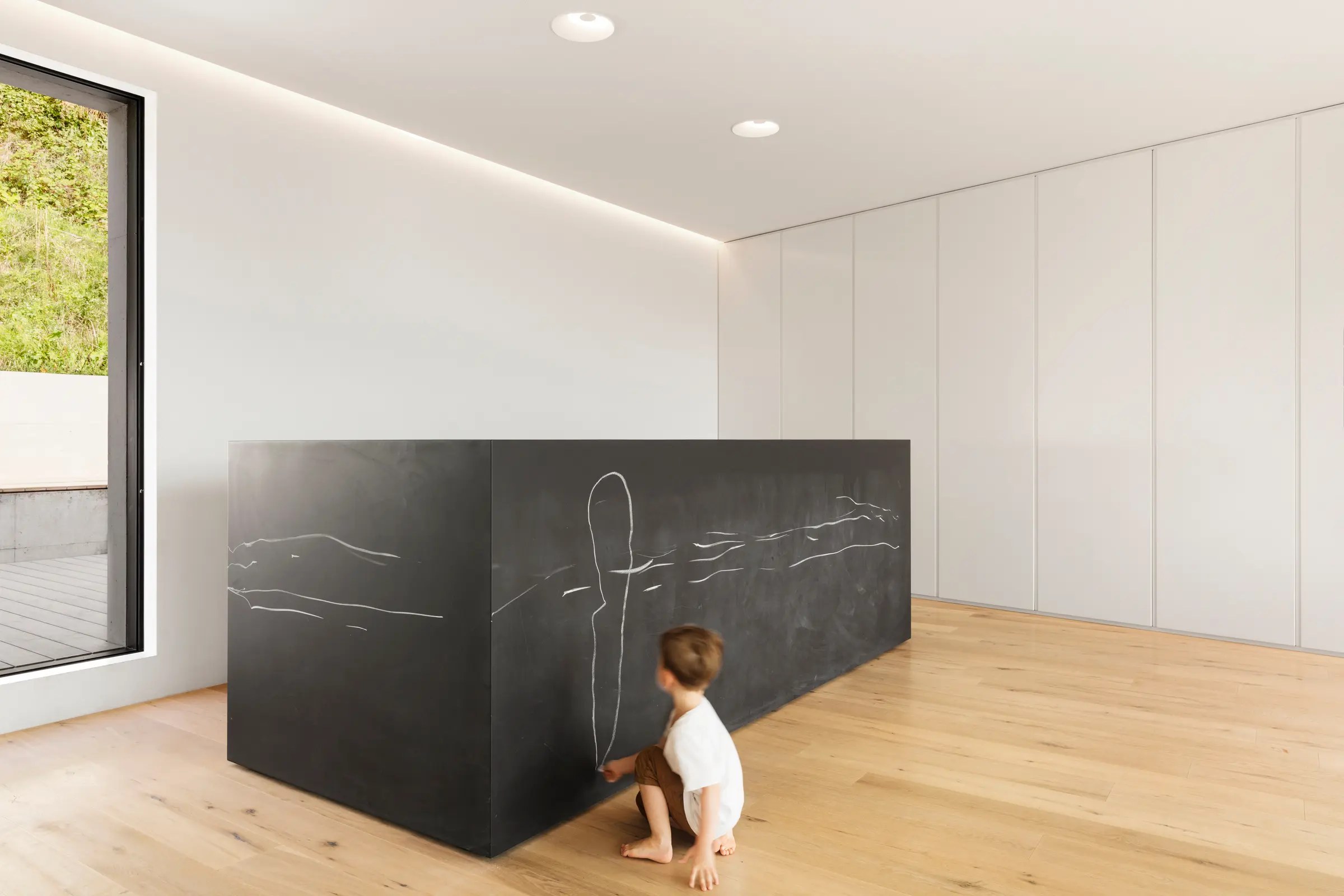
Black wall panel surfaces offer themselves at a communication and creative level. The living quality is created by the overlapping of the above-mentioned themes. Reduced form and material language, flowing living concepts, precise views and perfect acoustics (ceiling) create a quality of living that is shaped by the location and can develop and change with the users.
